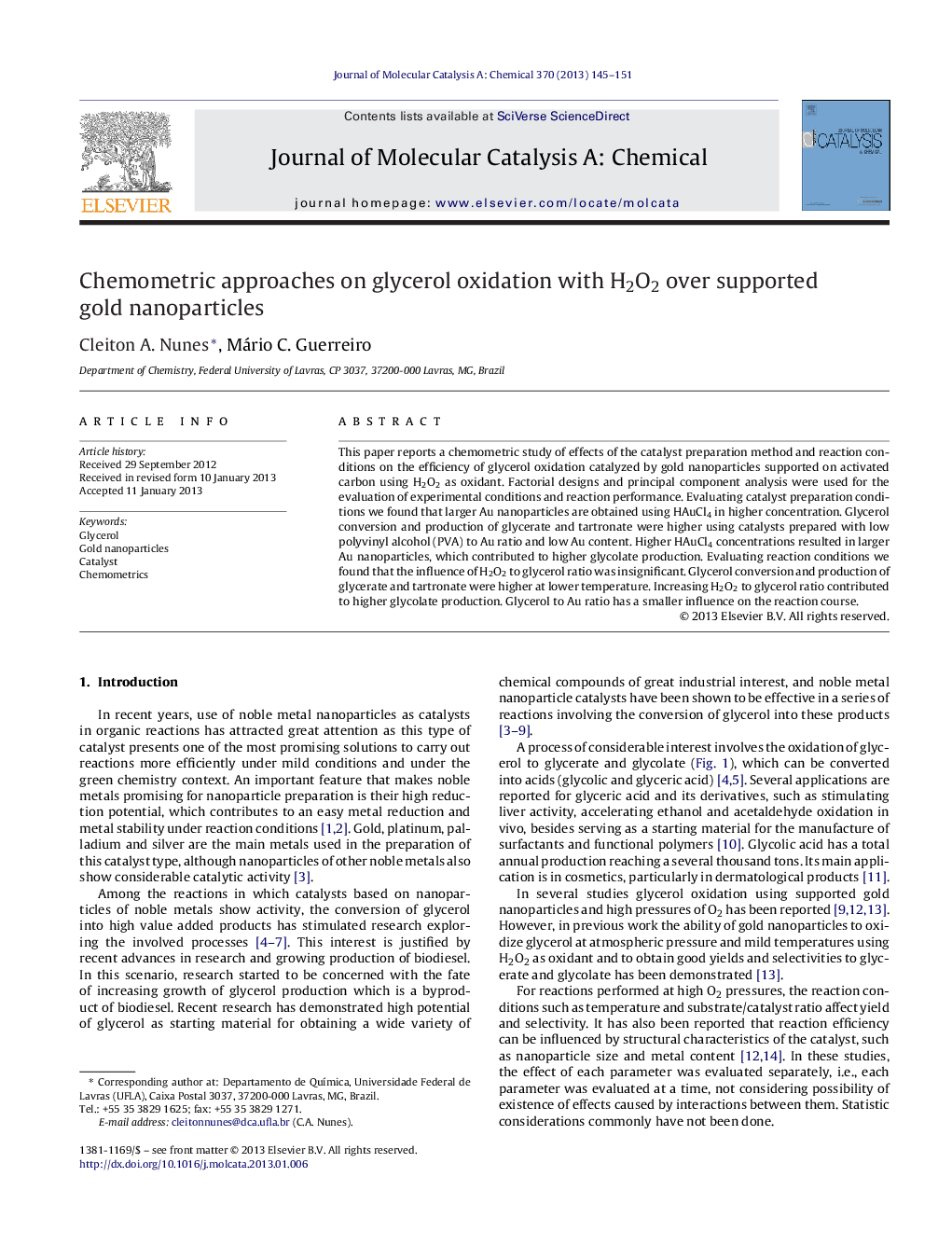| Article ID | Journal | Published Year | Pages | File Type |
|---|---|---|---|---|
| 65896 | Journal of Molecular Catalysis A: Chemical | 2013 | 7 Pages |
This paper reports a chemometric study of effects of the catalyst preparation method and reaction conditions on the efficiency of glycerol oxidation catalyzed by gold nanoparticles supported on activated carbon using H2O2 as oxidant. Factorial designs and principal component analysis were used for the evaluation of experimental conditions and reaction performance. Evaluating catalyst preparation conditions we found that larger Au nanoparticles are obtained using HAuCl4 in higher concentration. Glycerol conversion and production of glycerate and tartronate were higher using catalysts prepared with low polyvinyl alcohol (PVA) to Au ratio and low Au content. Higher HAuCl4 concentrations resulted in larger Au nanoparticles, which contributed to higher glycolate production. Evaluating reaction conditions we found that the influence of H2O2 to glycerol ratio was insignificant. Glycerol conversion and production of glycerate and tartronate were higher at lower temperature. Increasing H2O2 to glycerol ratio contributed to higher glycolate production. Glycerol to Au ratio has a smaller influence on the reaction course.
Graphical abstractFigure optionsDownload full-size imageDownload high-quality image (166 K)Download as PowerPoint slideHighlights► Larger Au nanoparticles are obtained using HAuCl4 in higher concentration. ► Glycerol conversion was higher using catalysts with low polyvinyl alcohol/Au ratio. ► Larger Au nanoparticles contributed to higher glycolate selectivity. ► Selectivity to glycerate and tartronate were higher at lower temperature.
